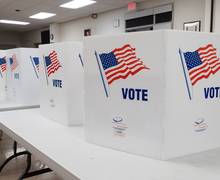SU professor’s book receives national attention
With today’s technology, it can take as little as a day for online content to receive millions of hits and views.
Syracuse University School of Information Studies professor Jeff Hemsley’s book, “Going Viral” received a lot of attention in 2014 for his work on virality, the study of how and why events become online viral sensations.
Viral events aren’t new, Hemsley said. They happened before the mainstream media was able to get the word out, using Rosa Parks is an example of a viral event that happened before the Internet.
“Parks was arrested and within a few days 40,000 people in the town of Mobile, Alabama knew about it and were protesting,” Hemsley said. “Now a story can go viral and reach 40 million people — that’s what our new social media landscape gives us.”
“Going Viral” won two prestigious academic awards in 2014. The Association of College & Research Libraries selected the book as an Outstanding Academic Title for 2014 in its January issue of Choice Magazine, and in November 2014, the book was recognized with a Best Book Award at the annual meeting of the Association of Information Science and Technology.
Hemsley said that social media gives us all the power to say yes to what’s important and share it with friends, even unimportant information.
“Sometimes it’s a fail video and someone face plants into a big mud puddle,” Hemsley said. “And yet we do watch those. They go viral because there’s something fundamentally human and silly about those kind of videos that makes us want to share and that makes us laugh.”
Hemsley began working on the book during his time as a PhD student at the University of Washington. There Dr. Karine Nahon, a professor at the University of Washington Information School approached Hemsley about the potential of co-authoring “Going Viral.”
Nahon came up with the idea for the book in 2008 while conducting research about the US presidential election. In 2012 Nahon went to the Library of Congress and gave a talk about virality when she was approached to write about the topic in an understandable way.
“There are so many technical books but not a good book that makes this information accessible to social scientists, information scientists and regular people,” Nahon said.
She was in the middle of writing a different book and Hemsley was working on his dissertation when the two decided to partner up to write “Going Viral.”
Hemsley and Nahon wrote the book in four months. “The data was already gathered and everything was ready so we embarked on a journey where I was in Israel writing in the morning while Jeff was in the USA writing in the evening. It was like a sweatshop — working five hours a day and so many durations on each one of us, so it was an amazing journey.”
Robert Mason served as Hemsley’s adviser at the University of Washington during his dissertation and over the production of the book. When Hemsley initially told Mason he was going to pause his dissertation to write a book Mason did not approve.
“I said, ‘Well I think it’s a great opportunity, but more time for books later,’” Mason said. Mason knew it would delay Hemsley’s dissertation.
“It’s not necessarily the best advice I ever gave him,” Mason said. But in writing the book, Hemsley consolidated a lot of ideas he already had about his dissertation and Mason became more of a cheerleader, he said.
What makes “Going Viral” different from other publications of its type, Hemsley said, is at no point do Hemsley or Nahon say that a viral event is good or bad.
“Instead what we do is talk about how they work. People can be hurt just as much as society is potentially helped. In fact a lot of viral events that hurt some people help others. They’re not good or bad, but they are a part of our new landscape.”
Published on January 14, 2015 at 12:01 am
Contact Kait: kehobson@syr.edu





